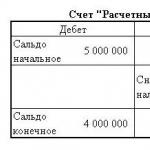The poem "Native" by Dmitry Merezhkovsky shows the reader a sad landscape that demonstrates the state of souls. The author is helped to achieve this effect by such means of artistic expression as: epithets (sad silence, monotonous pine trees, constant hum, etc.). Moreover, each epithet personifies nature, making its description much more vivid and closer to the reader. You get the feeling that you are there yourself, along with the author.
Dmitry Merezhkovsky's poem uses metaphors such as: "the world is being lost."
They create a kind of “fabulousness” of everything that happens.
Cross rhyme in the poem “native” by Dmitry Merezhkovsky is practically not felt, and thanks to this it adds the intonation of a prose text, the feeling of a spiritual story. And it makes the poem freer, easier to understand, and easier to remember.
All the means of artistic expression together create a picture of the true: calm and peaceful nature. And true feelings, incredibly unusual, very fabulous and deep.
Native (The sad mooing of distant herds...)
NATIVE
Distant herds are sadly lowing,
And the close rustle of a fresh leaf...
Then again - deep silence...
Dear ones, sad places!
The lingering hum of monotonous pines,
And white shifting sands...
O pale May, thoughtful as autumn!..
In the fields there is a calm, full of melancholy...
And the strong smell of young birch,
Grass and pine needles, when sometimes
Like timid, helpless tears,
Warm rain flows in the darkness of the night.
Here the joy is quieter and the grief is calmer.
You live as if in a sweet and sinless dream.
And every moment, like a drop in the ocean,
Lost in dispassionate silence.
May 1893
Notes:
LPN. 1896. No. 5 - PSS-II, vol. 22. Reprint: Yezhov and Shamurin. Autograph (IRLI), without capital, without strophic division, with crossed out mark “Niva” and with var. in Art. 11 (“quiet” v. “timid”); dated by position in the notebook among the articles of 1893 and by content: “Pale May” is mentioned. Written, apparently, at a dacha near Luga (see note under the previous text -
Today is the second part of my translation of an article by journalist Jeremy Rutherford from theathletic.com website, in which he asks the question “What to do?” St. Louis, due to its unenviable position at the bottom of the NHL standings this season...
But even if Pietrangelo and Steen simply co-exist because they're on the same team (and I don't think that's the case) that's not the only problem with the Blues. It is quite well known that for many years Vladimir Tarasenko was considered by his teammates as a person who was, as it were, “on his own.” Some players, including Steen, tried to influence him somehow, and sometimes Tarasenko publicly said the right things about everyone needing to work as one unit - both on and off the ice. But it remains unclear how these comments corresponded with his inner beliefs.
Of course, many teams have faced this in the history of the NHL, but when it concerns three players wearing captain and assistant stripes on their jerseys, it is quite natural to assume that this negatively affects the entire group of leaders.
So, while the Blues have a competitive squad and could be Cup contenders in the near future (with some rebuilding and the infusion of speedy players, of course), it is unlikely that this particular leadership group (which, of course, , includes other veterans) will be able to create the atmosphere necessary for the success of the franchise.
I don't think St. Louis should completely remake their roster. However, I believe that they should pull off at least one or two major trades - be it Pietrangelo or Steen (although their contracts, as you know, have a complete ban on this), or even Tarasenko - to immediately change the “faces” of the club. Yes, they could trade Schenn or Schwartz, but I don't think either trade would have the desired effect. I also don't think trading Parayko will solve everything. And while parting ways with Allen appears to be a priority, his departure alone will not unravel the entire tangle of problems that have accumulated.

There's no need to rush to find a new coach
Can you count on a new coach to come in and do what others have not been able to do before? Ken Hitchcock worked for St. Louis for a long time, but he was fired in 2017 after a series of failures. Mike Yeo followed him through the open door last month after less than two years with the club. And with the arrival of interim coach Craig Berube, virtually nothing has changed.
What about former Chicago coach Joel Quenneville? Well, it's possible, but it will cost a lot of money. He has one year remaining on his contract with his former club, which continues to pay him $6 million a year. So the Blues owners will have to fork out money to pay for the termination of the deal with the Hawks. And they say that he himself is in no hurry to return to coaching. So his return may not happen until next offseason.
Should the Blues hold on to all their veterans until the summer to see if Quenneville can take on the job and make a difference for the team?

No, probably not worth it.
First, Armstrong should take his time and do his due diligence in choosing Yeo's successor. What good will it do to rush to appoint a coach in just a couple of weeks if the general manager is not sure that this is the right way? Are the Blues still trying to save this season? And the new coach will immediately give them the necessary impetus? Or maybe this impulse will not be different from the one that Berube “gave” them?
As my friend and 101 ESPN Radio colleague Randy Karraker recently wondered, when was the last time this club had a thorough search for a coach that went beyond their organization and into the offseason? You might say that's what happened to Yeo, but it happened under extremely unique circumstances when the Blues brought him in as coach-in-waiting while Hitchcock was still at the helm. The last time this actually happened was with Jacques Martin, who was hired in the summer of 1986 (!). After him were Brian Sutter, Bob Plager, Bob Barry, Mike Keenan, Jimmy Roberts, Quenneville, Mike Kitchen, Andy Murray, Davis Payne and Hitchcock, who were either “promoted” to the position from within or appointed during the season. The only exception to this would have been Keenan, who arrived in the summer of 1995, but there was really no search at all then, since his availability after winning the Stanley Cup with the New York Rangers in 1994 automatically made him Barry's replacement. .

If Berube becomes the team's permanent coach, then that will also be Armstrong's decision. But if the latter still wants to wait until the circle of candidates expands, which could include the same Quenneville and coaches with assistants who will be fired during the current season, it may take time until the summer. And should Armstrong wait another six months without making any lucrative trades to secure a new coaching deal? No, you shouldn't.
In the first year of his contract extension for four more seasons, Armstrong certainly still has job security, but it's worth remembering that this will be his third coaching choice since joining St. Louis. Therefore, this time he must do everything wisely.
The current injury situation will likely play a role in any ongoing negotiations. But it must also be taken into account in the decision process to appoint a new coach. That is, why bring someone in immediately when he gets a short-handed squad that could remain that way until Christmas, until Pietrangelo and Fabbri return to action?
To be continued...




